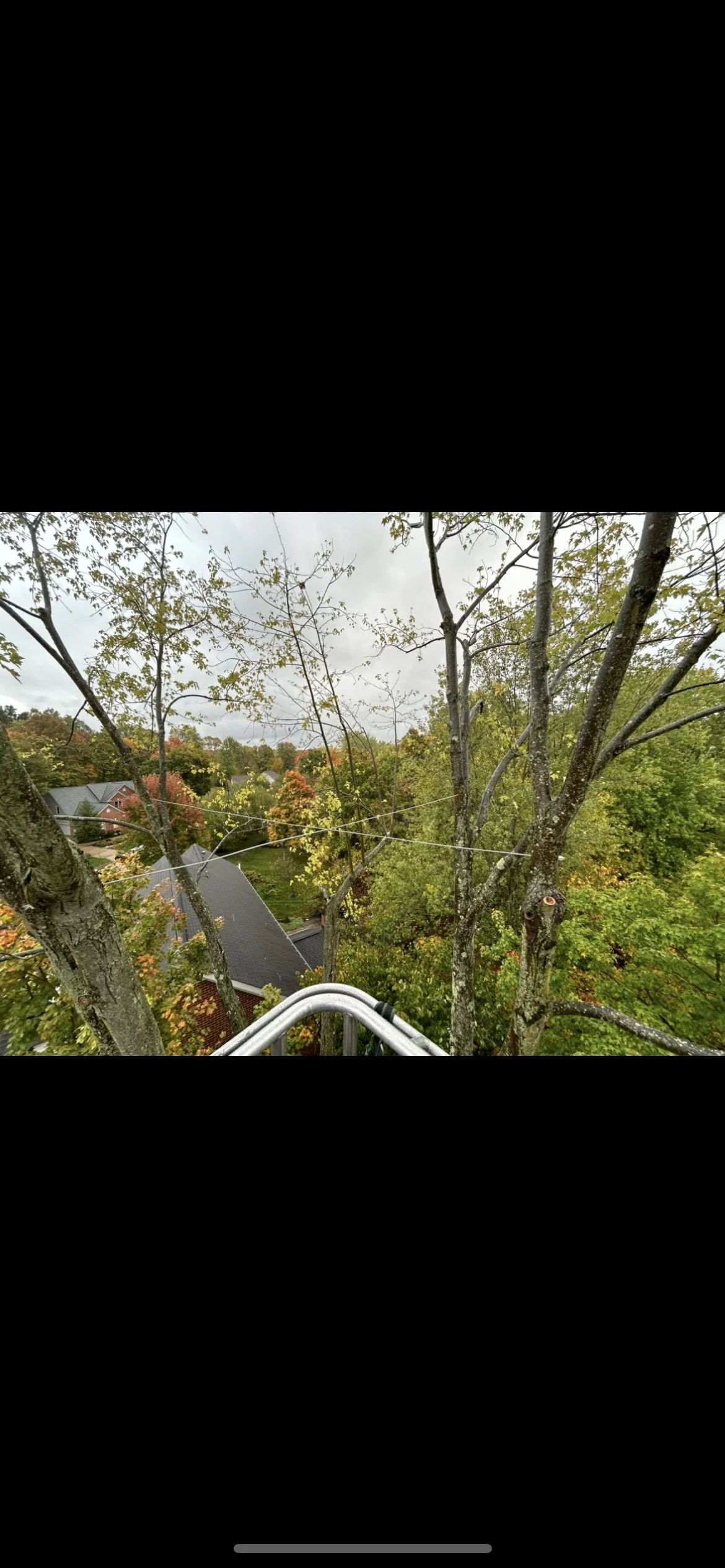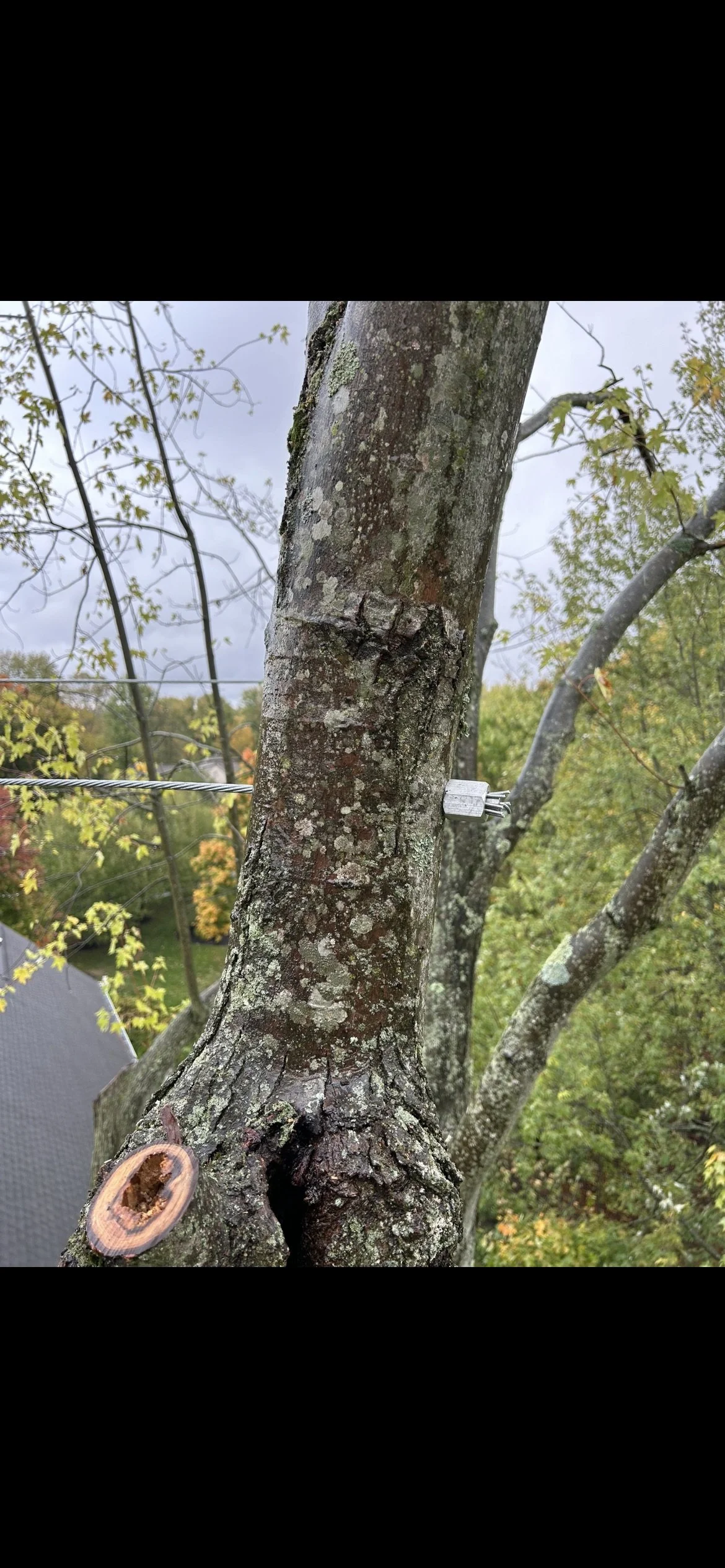Cabling, Bracing, and Propping
Protecting Your Trees and Property From Future Risk
At Edmonds Tree & Landscape Service, we understand that trees are dynamic living structures. As they grow, they can develop weak spots or structural issues that may pose a risk to their stability and the safety of your property. That’s where our cabling, bracing, and propping services come in. These specialized techniques are designed to support trees with structural challenges, reducing the risk of damage during storms or severe weather while preserving the health and longevity of your trees.
Why Do Trees Need Cabling, Bracing, or Propping?
Trees can develop structural issues due to factors like:
• Co-dominant stems or leaders: Multiple competing branches that grow from a single point, increasing the likelihood of breakage.
• Weak or split branches: Areas of the tree that lack sufficient strength to withstand wind and weight.
• Tree disease or decay: Damaged or decaying wood that compromises the integrity of the tree.
• Unbalanced growth: Trees that grow lopsided due to environmental factors or pruning history, leading to an increased risk of failure.
While these factors can sometimes be difficult to address through traditional pruning or tree care, cabling, bracing, and propping can provide support that reduces the risk of failure.
Our Cabling, Bracing, and Propping Process
1. Cabling:
We install static and dynamic cables between tree leads to reduce the chance of splitting or breaking by keeping the stems loaded in compression. This method provides support without restricting the tree’s natural growth. Cables are carefully placed to minimize damage to the tree and allow for continued health.
2. Bracing:
In cases where a tree has a weak or split trunk, we use rods or bolts to stabilize the structure. Bracing offers additional support where cabling may not be enough, helping the tree stand strong even under stress.
3. Propping:
For young or established trees that require extra stability, props can be used to provide temporary or permanent support. This method is often employed to safeguard ornamental trees with leaning trunks or branches that need reinforcement to stay upright.
When to Consider Cabling, Bracing, or Propping
• When there are visible signs of weakness or stress: Look for split or cracked branches, co-dominant stems, or heavy leaning.
• For mature or high-risk trees: Especially those near structures or walkways that may pose a risk if they fail.
• After storm damage: To prevent further damage and stabilize weakened trees.
• For preserving heritage or valuable trees: These trees may be irreplaceable, and cabling or bracing can prolong their life.
The Benefits of Cabling, Bracing, and Propping
• Enhanced stability: Support trees with weak spots, reducing the risk of failure or damage.
• Minimized risk: Prevent potentially dangerous tree failures that could harm property or people.
• Tree preservation: Save trees that might otherwise be removed due to structural concerns.
• Cost-effective solution: Prolong the life of your tree and avoid the cost of tree removal.
Why Choose Edmonds Tree & Landscape Service?
• Certified Arborists: Our team consists of ISA Certified Arborists® who follow the highest standards for tree care and safety.
• Expert Assessment: We’ll evaluate your tree’s unique needs and recommend the best course of action, whether it’s cabling, bracing, or propping.
• Prescription: Each tree is different, and we provide customized care to address specific structural issues while promoting long-term| tree health.
• Proven Experience: With over 30 years in Powell, Ohio, we have the knowledge and expertise to handle all types of tree support needs.
FAQs - Cabling, Bracing, and Propping
-
No, when installed correctly by our ISA Certified Arborists®, cabling and bracing are safe for your tree and will extend its life. These systems provide support while allowing the tree to continue growing naturally, reducing stress on weak points without causing harm.
-
Tree support systems can last for many years, 10 years for our dynamic fiber cables and 20 years for our static steel cables, but regular inspections are essential. We recommend having your tree and its support systems inspected annually to ensure they remain effective and to adjust or replace them as the tree grows and changes.
-
You should consider cabling or bracing if your tree has co-dominant stems, weak branches, or visible splits, or showing signs of structural stress. It’s especially important for trees near high value targets with high frequency to reduce risk.
We base our systems off of your risk tolerance. Systems are always secondary to end-weight reductions to reduce the load on the system as a whole.



